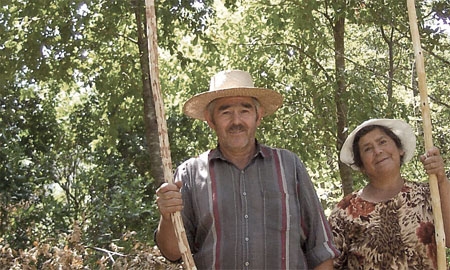The Chilean forestry industry is the second most important sector of the economy after mining, contributing 3% to GDP. It is also the most export-oriented wood industry in South America: 70% of production is shipped abroad, according to the Chilean timber industry association, Corma.
More than 20% of Chile’s total land area is forested, or some 15.5 million hectares (38.3 million acres), with plantations covering over 2 million hectares – up from just 300,000 hectares in the 1970s – mainly along the southern coastal regions, supplying 98% of the industry’s timber needs. Radiata pine and eucalyptus comprise the vast majority of these plantations, which provide the raw timber for more than 400 different products. After pulp, wood-based panels and lumber are the most important exports.
Chile’s forestry industry currently accounts for 8% of all global forestry exports. The main export markets are China, Japan, South Korea, the U.S., Taiwan, Belgium, Argentina, and Germany. Increasing demand from China and other emerging Asian countries will continue to drive growth in Chile’s forestry industry far into the future. Meanwhile, major Chilean timber producers such as Arauco and Masisa have begun to expand their production activities into the rest of South America, particularly Brazil and Uruguay.
In 1990, Chile’s forestry product exports netted US$850 million – a mere 15% of last year’s figure. The remarkable growth in the sector over the past two decades is due in large part to government policies aimed at expanding the industry while protecting sustainability through programs such as land degradation recovery.
Eduardo Vial, executive director of
CONAF, the National Forest Corporation, believes that Chile has reached a balance between preserving and exploiting native forests. “I think that there’s a consensus that environmental and social issues must be taken into the consideration in the productive process. Today, no company can get away without considering these issues in their operations.”
Operating under the Ministry of Agriculture, CONAF has played an important part in the legislation concerning forestry sector investment and in the promotion of long-term sustainability of forest ecosystems. “Although there are exceptions, in Chile no tree is felled unless it is controlled, regulated and authorized by CONAF,” explains Mr. Vial.
CONAF, which also administers Chile’s national parks and natural monuments and reserves, is now focusing on assisting and incentivizing small landowners as well as stopping desertification, a phenomenon that has taken hold in the more arid parts of the country.
Today, wood is the most consumed raw material in the world. Consequently, Chile has based its industry on highly productive cultivated forests, where over the past 33 years the annual plantation rate has far exceeded that of felling. “In the past 10 years, we’ve planted 500,000 hectares of forest,” says Mr. Vial. “I think we’re doing a good job.”

0 COMMENTS